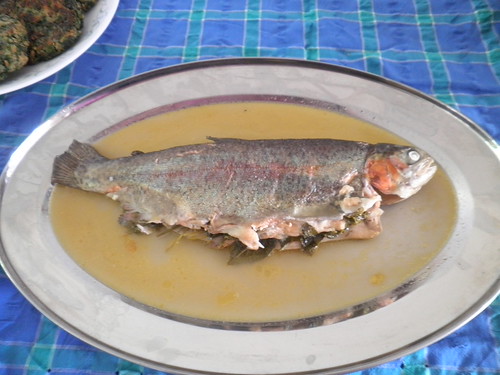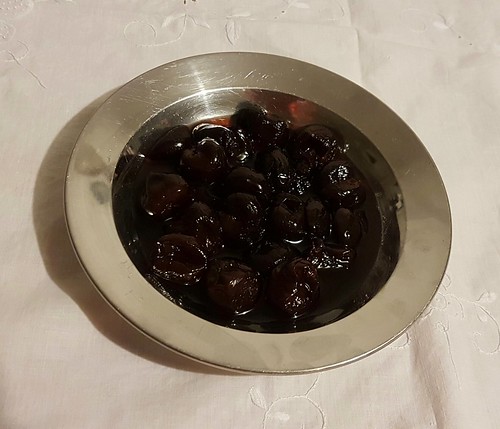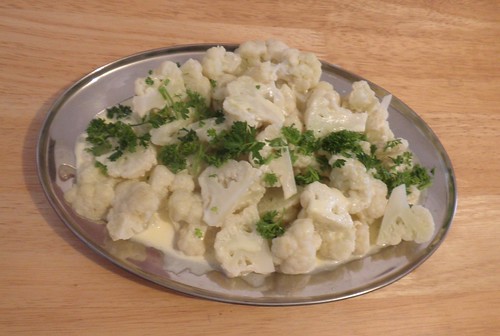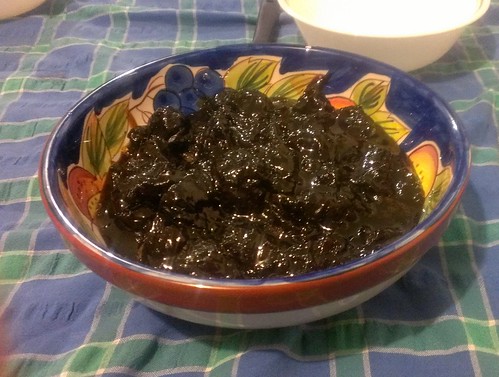To stew a small Salmon, Salmon Peal, or Trout.
Take a salmon, draw it, scotch the back, and boil it whole in a stew-pan with white-wine, (or in pieces) put to
it also some whole cloves, large mace, slic’t ginger, a bay-leaf or two, a bundle of sweet herbs well and hard bound up, some whole pepper, salt, some butter, and vinegar, and an orange in halves; stew all together, and being well stewed, dish them in a clean scowred dish with carved sippets, lay on the spices and slic’t lemon, and run it over with beaten butter, and some of the gravy it was stewed in; garnish the dish with some fine searsed manchet or searsed ginger. Robert May, The Accomplisht Cook, 1660.Take a salmon, draw it, scotch the back, and boil it whole in a stew-pan with white-wine, (or in pieces) put to
it also some whole cloves, large mace, sliced ginger, a bay-leaf or two, a bundle of sweet herbs well and hard bound up, some whole pepper, salt, some butter, and vinegar, and an orange in halves; stew all together, and being well stewed, dish them in a clean scoured dish with carved sippets, lay on the spices and sliced lemon, and run it over with beaten butter, and some of the gravy it was stewed in; garnish the dish with some fine grated manchet or grated ginger.
Ingredients
| 1 trout, cleaned | 4 bay leaves |
| 1 orange, sliced in two | 1 tbs thyme leaves |
| 250 mL white wine | 2 tbs parsley |
| 125g butter | ½ tsp pepper |
| ½ tsp cloves | 1tsp salt |
| ½ tsp mace | 1 tbs sliced ginger |
| Slices of toast (optional) | 1 lemon, sliced (optional) |
- Stuff the cavity of the trout with the cloves, mace, pepper and herbs.
- Put the trout in a shallow pan with the wine and half the butter, and add enough water to cover the fish.
- Squeeze out the juice of the orange into the pan, and add the halves to the pan as well.
- Bring to the boil, then reduce to a simmer.
- You will know the fish is cooked when the eye goes opaque.
- To serve, cut the crusts off the toast, if using, and line a serving dish with the toast and the lemon. Lay the fish on top, then dot the flesh with the rest of the butter, and pour over some of the cooking liquid.

Trout with orange

Salmon with orange. This was cooked for a feast, and it was easier to bulk cook ready cut salmon fillets than an entire fish.
Further Reading
Click on the links below to buy direct from The Book Depository.
May, Robert (1685 edition) The Accomplisht Cook.



